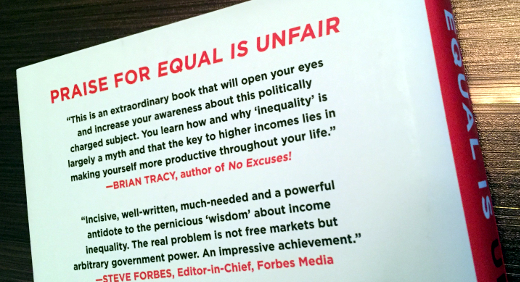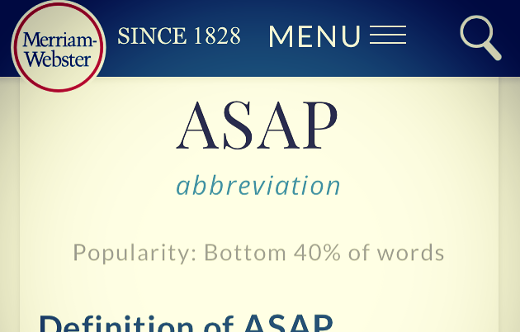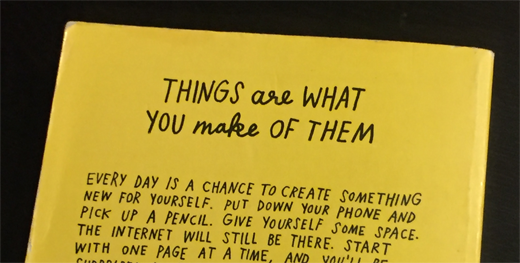My Takeaways From The Ultimate Female Fan Guide to Pro Football
The Super Bowl is a game you prepare for mentally, physically or both – depending on your level of fandom, and what you are watching it for. It is unique among sports as even non-fans watch, for the commercials, because they are at parties, for curiosity sake, et. al.
If you are a football fan, you realize the complexity of the rules of the game – realize in that you understand them all, none of them, or as many are, somewhere in between. How much you may know is most likely influenced by if you played football, was taught by a parent or someone else close to you or you learned on your own… he latter being the case for myself. Football for me wasn’t my first love of sports, but has become it. I grew up a baseball fan, which came from my Mom’s love of the Boston Red Sox. While I was growing up, the New England Patriots were horrible, and the bottom rung of the sports ladder in New England, way behind the Sox, Boston Celtics and Boston Bruins.
So when I decided on a whim to get season tickets for the Patriots back in the early 90’s, before they became the multiple Super Bowl winning team they are now, where I had some knowledge of the game, I had much to learn. As I was in my mid-20’s at that time, I was a little embarrassed that I didn’t know more of the game, and sought out a way to learn it. I found a book that not only helped me then, but over 20 years later as well.
I found the book The Ultimate Female Fan Guide to Pro Football at the Patriots Pro Shop, which was adjacent to the team’s former home field, Foxboro Stadium. Flipping through it, I realized it was exactly what I needed to learn the game. Two decades later I found it among some things, and I dusted it off and re-read it. My takeaways, as follow, come from my recollection of my initial read as well as this recent unearthing of it.
Structured Learning Is Sometimes Better Than On-The-Task Learning – As most of my training and learning over my career has been on-the-job or just-in-time and supplemented by some training, depending on the topic structured learning is the better way, as it was for me with football. Simply sitting down and watching 60 minutes of plays over 3 hours may not even cover everything, and taking a methodical approach supplemented with watching the game helped me learn it well.
Anecdotal Information Provides Greater Context To Formal Knowledge – Learning the formal rules of football, like any other topic, is important to learning about what you are watching. But for a game like football which has evolved over close to 100 years, having familiarity of the evolution and events which led to where the game is today is great to the deep understanding of the game. Betsy Berns mixes helpful hints and fun facts throughout the pages of The Ultimate Female Fan Guide to Pro Football, all of which provide greater context to the main information presented.
What Taught Me Helps Teach Others - When I found the book, I wanted to go through it again as I am teaching my daughter the rules of football. As I am writing this I am sitting down with her and we are going through it together, and I am helping her understand both the rules for and my love for the game, which I hope will lead to her own appreciation and affection for it too.
As my copy of The Ultimate Female Fan Guide to Pro Football came out over 20 years ago, what I have is now out of print and is now known simply as The Female Fan Guide to Pro Football by the same author. Where I haven’t read the newer version specifically, I can only imagine it is better (not to mention more up to date) than my version. I recommend it to any fan of any reading age – and gender – as a great way to learn this great game.
This is from The Hot Iron, a journal on business and technology by Mike Maddaloni.
Did you enjoy this? Subscribe to The Hot Iron by RSS/XML feed or Read by Email.
Book Take-Aways • Strategize • Thrive • (0) Comments • Permalink
My Takeaways From The Book Equal Is Unfair
This past spring I attended a debate held by Chicago Ideas Week between Dr. Yaron Brook, the executive director of the Ayn Rand Institute and Dr. James Galbraith, an economist and professor at the Lyndon B. Johnson School of Public Affairs at the University of Texas, on the topic “Is Equal Fair?” Where it was a debate about a heady topic, there was a good connection with the audience on the subject of equality and inequality in our society.
As someone who owned his own business and believes my success and failures are my own doing, despite all outside factors and influences, I personally take a more conservative look at this topic. That being said, I came into this debate with an open mind and was interested in hearing both sides to see how either could influence my thinking. In my humble opinion, Brook won this debate not only on substance but in style and how he presented complex economic models in simple terms.
After the debate I bought a copy of the book Brook co-authored with Don Watkins, an Ayn Rand Institute fellow, titled Equal is Unfair as I was interested in reading more on the points Brook made during the debate. As I expected, it is a very comprehensive book, with economic charts and data. However, it has an interesting and engaging narrative that explains well to the non-numbers person like myself without taking anything away from the topic.
As I read Equal Is Unfair, there were a few overarching takeaways I took from it, including:
Nothing Is Ever Equal – Other than a well-formed math equation, it is hard to say that all things are truly equal in the world, or can be. Many people have advantages in one area over others where they may have disadvantages in other areas with the same people. Especially in an ever-changing world, it’s hard to predict everything and keep things in equal, especially when there are unpredictable and unanticipated forces that may come along and have a negative impact, at first, and from which someone may recover or not.
By artificially trying to make something equal that naturally isn’t, it is simply going against a tide that is hard to maintain. Rather, do you look for another way, a Plan B, to gain advantage as compensation? For myself, I don’t look at being equal as the end goal.
What Do You Really Want? – The idea of equality is discussed in the book, as it was in the debate, to bring people in line with others who have better access to resources or information. To this end, I think to myself… is the goal for everybody to be equal, or to have the opportunity to be all the want to be?
Consider the Ripple Effect – Efforts to make all things equal may have unforeseen consequences, such as costs incurred or diverted, that have to be paid for somehow from somewhere. Anything new will have an impact on time and resources which are not infinite.
Whatever side you are on this issue or whatever your political and societal positions are on the topic of equality, I recommend reading Equal Is Unfair for a unique point of view on this topic.
This is from The Hot Iron, a journal on business and technology by Mike Maddaloni.
Did you enjoy this? Subscribe to The Hot Iron by RSS/XML feed or Read by Email.
Book Take-Aways • Strategize • (6) Comments • Permalink
Thriving In A Culture of ASAP
When you see “ASAP” in an email or text, do you cringe? Sadly most of us do – I do – as the acronym, which is made up of pleasant words, has ended up becoming a harsh term.
Looking up the definition of ASAP in the dictionary you see it stands for “as soon as possible” which is, as I said, pleasant. But thinking back to the cringe-causing event (or more likely events) that come to mind when you read the opening of this post, do you think the person typing ASAP really meant “as soon as possible?”
Hell no I can hear you say! Rather than asking you to do something as soon as it is possible for you to do so, aren’t they really asking, “drop all you are doing and respond to this right this fucking second!” Let’s be honest, this is what should be listed in the dictionary as the true definition of what ASAP means, and not just the words behind the acronym.
The Culture of ASAP
Most organizations have a culture of ASAP. In this hyper-connected world where any information can be had in seconds, we have a heightened expectation that seems to come with a narrowing window as time goes on.
Note I say “any” information and not the “right” information or even accurate information, or any other qualifying adjectives that requires strategic thinking. This has no place in the culture of ASAP, as everything is being responded to fast and furiously. Even if the answers or responses have already been prepared and presentation in reports or dashboards, the person slinging ASAP around has no time for these tools and want the answers from you and right now, though ironically they may be the owner of said reports and dashboards.
Succeeding Under ASAP
It goes without saying that to get beyond a culture of ASAP takes leadership. Part of that leadership is in communications – sharing expectations of greater foals and what may be asked of a team. As well, the team is given time to ideate and strategize the big picture down to their area of expertise and can thus be proactive in using information sources or channels.
In the absence of that leadership, there is still the ability to make gains and efficiencies yourself to make your life easier. Simply documenting ASAP requests is a great start, by recording overall what is being asked, looking for trends, and comparing it to what you are doing now. Incremental improvements to processes or reporting can be made as a result of this analysis. As requests come in, make sure you are clear as to what is being asked and – if appropriate – why it is being needed. The “why” can influence “what” is created. These latter steps are things I do on a routine basis to make both the collection of data and reporting of information much more efficient.
Deconstructing ASAP
Priorities in business change frequently and requests can come in that need to take top priority. With some analysis and a small series of successful changes, dealing with ASAP can be made much less harsh, as it is likely to not go away altogether.
This is from The Hot Iron, a journal on business and technology by Mike Maddaloni.
Did you enjoy this? Subscribe to The Hot Iron by RSS/XML feed or Read by Email.
Business • Strategize • Thrive • (2) Comments • Permalink
About My Deconstructions
When I started writing here at The Hot Iron, the name came from the expression, “strike while the iron is hot.” Though my entry into the world of blogging could be considered more functional than creative, taking burning topics – whether business, technology or personal – and boiling them down was far from anything new to me.
Much thought has gone into the direction of my blog lately, which is one aspect of the thought into my greater self. As I have considered the focus on what I write, I have also focused on how I write, namely in the approach I take with covering a topic. The product of this quest is what I am calling My Deconstructions.
What is a deconstruction? As I write here and elsewhere, I will strive to take my analysis and reporting on a topic and conclude it by breaking it down into essential points and conclusions. In some regards it will be similar to my book takeaways; rather than rating a book I share what I gained from the time spent reading it. In some cases it is a summary, and in others I look back on something I took from it and am surprised I came up with it! The deconstruction may be takeaways, action items, next steps, essential components, revelations or something else I haven't thought of a category for.
Like anything, I have already started writing these and will see how it evolves. As a reader, whether your first time or as a long-time one (and I know there's a few of you out there), I welcome your thoughts and feedback as this new approach appears in my future posts.
Deconstructing Deconstructions
Why shouldn't what I write about deconstructions have one itself? As time is always of the essence, taking the time to make or reiterate the main points from something is always useful to whoever is consuming it. It also helps the reader understand your main points, as you never want to assume someone has gleaned them from reading your work. In the end the reader – you – will say if these deconstructions are helpful, and please let me know in the comments to this post either way.
This is from The Hot Iron, a journal on business and technology by Mike Maddaloni.
Did you enjoy this? Subscribe to The Hot Iron by RSS/XML feed or Read by Email.
Announcements • Business • Strategize • (0) Comments • Permalink
My Takeaways So Far From The Book 1 Page At A Time
A consequence of being in a routine is that our entire body can be consumed by it. Where things like repetitive strain injuries or simply being sore from sitting on our butt for a long time are obvious, what isn’t as apparent is the impact on our brain.
If you don’t believe me, here’s an example – you are buzzing along in what you do all day and someone comes along and asks you a question, and all you can do is stare back dumbfounded. They may have well as used a Sharpie and wrote it on a pool noodle and hit you with it. Call it brain fatigue, but does it show a sign your brain needs some exercising?
When I saw the book 1 Page at a Time – A Daily Creative Companion by Adam J. Kurtz sitting on the shelf at Judy Maxwell Home in Chicago, I couldn’t help but pick it up. (If you don’t know about this store, think Spencer Gifts with an old-world flair and a sharper edge; it’s also owned by actress Joan Cusack, so that adds to its eccentricity) It only took me flipping through the first few pages and I was sold. It is an adult workbook, with a page a day dedicated to a brief creative exercise to do in the book.
Each page presents a unique activity, from making a list to drawing a picture to whatever. Some are quick and easy, some require actual thought. As it’s a page a day, and I started late last year, I am not done yet – thus the “so far” in the title – but I have enjoyed every exercise so far.
Though I have much to go, I feel my takeaways from 1 Page at a Time will endure and be reinforced as I go through it.
Think Different – Borrowing from the infamous Apple tag line, this book does just that. It asks you to do things you most likely don’t normally do on a regular basis as part of your job or even for fun.
Challenge Yourself – As some of the activities have required me to sit back and ponder before putting pen to page, it’s been extremely helpful to have a challenge that is outside of my normal work and life challenges, which tend to be more technical, business and child-focused.
Draw – When was the last time you drew a picture? For the fun of it? This is probably why adult coloring books are all the rage these days. Where many of you reading this may not consider yourself an artist, the drawing I am talking about is not about being an artist. Rather, it is about expressing something with visualization.
On occasion a day or 2 go by when I don’t do a page a day, but then I catch up on them. I tend to do them in page sequential order, but there is no reason you can’t flip around and choose one at random. I never read ahead, as I like to approach these with some spontaneity.
I highly recommend getting a copy of 1 Page at a Time, or get 2 – 1 for yourself and 1 for a friend. If you have it and are using it, I’d love to hear what you think about it in the comments to this post.
This is from The Hot Iron, a journal on business and technology by Mike Maddaloni.
Did you enjoy this? Subscribe to The Hot Iron by RSS/XML feed or Read by Email.
Book Take-Aways • Business • Strategize • Thrive • (3) Comments • Permalink








